#arduino shields
Explore tagged Tumblr posts
Text
Making 32 bespoke hand crafted bits.
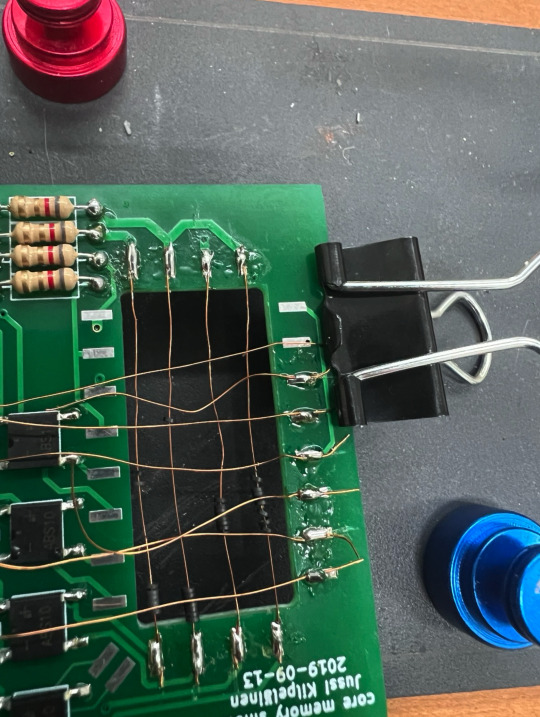
Hand made bits are so much nicer than store-bought bits.
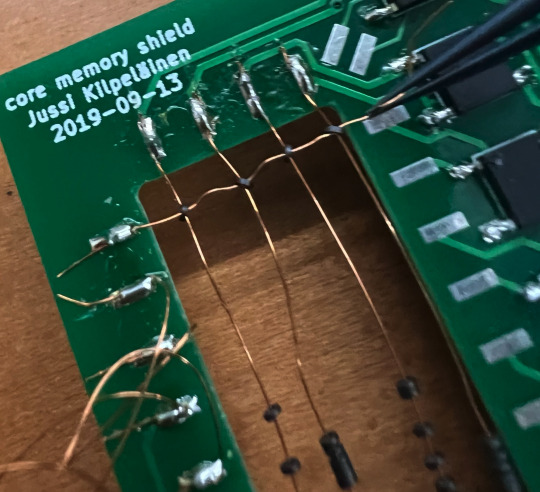
In the early days of woven core memory they sent it off to women to weave because the dudes took one look at it and thought “this is girl stuff like sewing and weaving”
I find this hilarious.
Here is a link (cued to the time where it starts) of the best and most clear explanation of how core memory works. Reading & writing a bit has many steps!
I always felt there was something poetic about how one must destroy this kind of memory in order to read it. Observation is never passive... to observe a system is to change it...
#core memory#ferrite core#arduino#arduino shield#bits and bytes#computer memory#CS#computer history#women's history#weaving#textiles#textile arts#fiber crafts#soldering#electronics
17 notes
·
View notes
Text
Features
SD Card Slot: Supports standard SD and microSD cards (with adapter) for data storage.
Real-Time Clock (RTC): Includes an integrated DS1307 RTC to timestamp data accurately.
Dedicated Headers: Pin headers for easy connection to Arduino and external modules.
Reset Button: Convenient reset function for debugging and testing.
Prototyping Area: Extra space for adding custom circuits or components.
Battery Backup: Keeps the RTC running during power loss (requires CR1220 battery, not included).
1 note
·
View note
Text
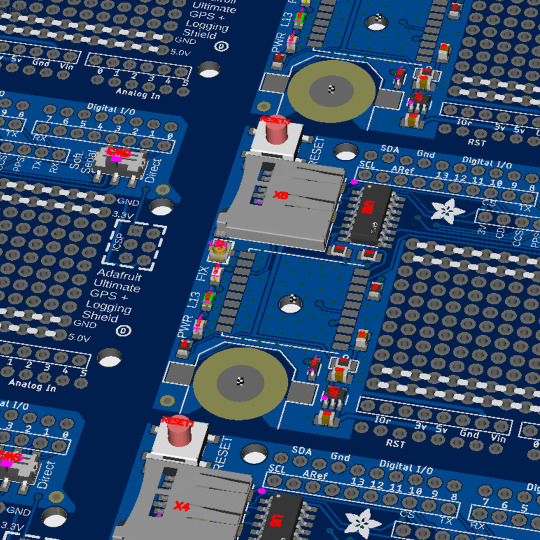
PCB of the day! Ultimate GPS Logger Shield 🌐🔌🛰️
MTK3333 chipset with -165 dBm sensitivity, 10 Hz updates, 99 channels, 30mA power draw, Arduino-compatible. Includes MicroSD slot, RTC battery (7-year backup), built-in & external antenna options, PPS output, LEDs, big prototyping area. Enables high-speed logging/tracking.
#adafruit#electronics#pcb#opensource#opensourcehardware#pcboftheday#gps#arduino#mtk333#gpslogger#shield#sensitivity#lowpower#tracking#arduinocompatible#microsd#rtcbackup#externalantenna#prototyping
17 notes
·
View notes
Text
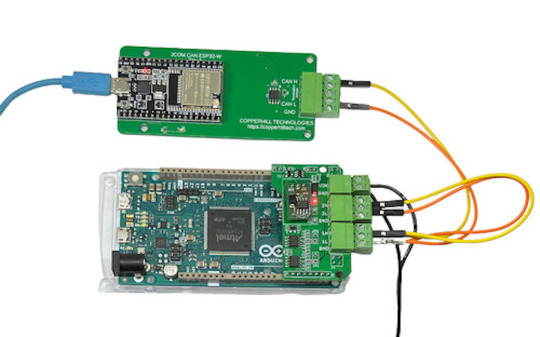
Unlocking SAE J1939 Development with the Arduino-Due-Based Programming Kit
Discover the Arduino-Due-Based SAE J1939 Programming Kit by Copperhill Technologies — a complete development platform for building, simulating, and monitoring heavy-duty vehicle networks using the J1939 protocol. Includes hardware, software, and detailed guides for ECU prototyping, diagnostics, and telematics.
#arduino due#can bus shield#sae j1939#can bus#embedded system#J1939 simulator#J1939 programming#arduino ide#J1939 protocol stack
0 notes
Text
Walked into an electronics supply/parts store the other day, and the whole place had that hot plastic smell from all the equipment working hard in there...got me feeling things
#there were some beautiful shield drives and microprocessors#I was picking up a little arduino at the time#techum
0 notes
Text
Raspberry Pi Pico Expansion Shield
Unlock the full potential of your Raspberry Pi Pico with the Expansion Shield. This versatile accessory offers a seamless way to connect various sensors, displays, and peripherals to your Pico board, making it a powerful tool for your projects.
#Raspberry Pi Pico Expansion Shield#electronics#best electronic components online buy india#electronic components#best electronic components online store#buy electronic components online store in india#business#electronic components online store#top online electronic components shop#arduino#home & lifestyle
0 notes
Text

All electronic components are buy at reasonable price in sensorembedded.com
#arduino#sensors#motors#shield#wifi#relay#cables#rfid#interfacing#drones#ebike#tools#electronic components
0 notes
Text

HALLOWEEN - Kiddo Robot Pt 1.
We're all going to be robots.
Kiddo wants something on his chest (like Iron Man) and something that makes robot noises. Had this LOL Shield (remember them?) from YEARS ago. Going to invest learning and doing new things in other aspects of our costumes. Wired-up a switch and battery pack. Using the DNA Spectrum Sketch. Just need a cardboard assembly, silver spray paint, and onto the next.
0 notes
Text

Sweet is the Soul
Debuted 5.10.24
The narrative follows one night of the protagonist, Kyoya’s life as he is invited to attend a sacred ceremony in the mountains of Japan shortly following his mother’s death. It is a short horror/thriller branching narrative explored exclusively through interactions with characters and various objects. Taking inspiration from Taiwanese horror films and games.
a semi-digital interactive narrative which utilizes scanning NFC cards to an arduino with an NFC shield as its sole interaction point.
3 notes
·
View notes
Text
Arduino Due vs. Mega: A Comprehensive Comparison
What is Arduino Due and Mega?
The Arduino platform has revolutionized the world of DIY electronics, providing hobbyists and professionals alike with versatile and powerful microcontroller boards. Among the myriad of options, the Arduino Due and Arduino Mega stand out for their advanced features and robust performance. The Arduino Due, introduced in 2012, is the first Arduino board based on a 32-bit ARM core microcontroller, the Atmel SAM3X8E. In contrast, the Arduino Mega, built around the 8-bit ATmega2560 microcontroller, is known for its abundant I/O pins and memory. Understanding the differences between these two boards can help in selecting the right one for specific projects, enhancing both functionality and efficiency.
Processing Power and Performance
The processing capabilities of the Arduino Due and Mega are distinctly different, primarily due to their core microcontrollers. The Arduino Due, with its 32-bit ARM Cortex-M3 processor running at 84 MHz, offers significantly higher processing power compared to the Arduino Mega's 8-bit ATmega2560, which operates at 16 MHz. This difference in architecture and clock speed means that the Due can handle more complex calculations and tasks faster and more efficiently than the Mega. For projects requiring high computational power, such as real-time data processing or handling multiple sensors simultaneously, the Due is the superior choice. However, for simpler tasks, the Mega's processing power may suffice.
Memory and Storage Capabilities
Memory is another critical aspect where the Arduino Due and Mega diverge. The Arduino Due is equipped with 512 KB of flash memory for code storage and 96 KB of SRAM for data. On the other hand, the Arduino Mega has 256 KB of flash memory and 8 KB of SRAM. Additionally, the Due features a Direct Memory Access (DMA) controller, which allows for efficient memory operations, freeing up the CPU to handle other tasks. These memory enhancements make the Due more suitable for applications requiring large codebases and significant data handling, such as advanced robotics or sophisticated control systems. The Mega, with its more modest memory, is ideal for less demanding applications.
Input/Output Capabilities and Expansion
Both the Arduino Due and Mega are renowned for their extensive input/output (I/O) capabilities, yet they cater to different needs. The Mega boasts a whopping 54 digital I/O pins, 16 analog inputs, and 4 UARTs, making it ideal for projects that require multiple sensors, actuators, or communication interfaces. The Due, while offering fewer digital I/O pins at 54, includes 12 analog inputs and 4 UARTs, along with additional features like two DAC outputs for analog signal generation and enhanced PWM capabilities. These features provide the Due with superior analog output capabilities, making it suitable for applications like audio processing or advanced signal generation.
Power Consumption and Compatibility
Power consumption and compatibility are practical considerations when choosing between the Arduino Due and Mega. The Due operates at 3.3V logic levels, which makes it more power-efficient than the Mega, which uses 5V logic levels. This lower voltage operation is beneficial for battery-powered projects where energy efficiency is crucial. However, the 3.3V logic also means that the Due is not directly compatible with 5V components without level shifters. The Mega, with its 5V logic, offers broader compatibility with existing Arduino shields and components, making it a versatile choice for a wide range of projects. Understanding these power and compatibility nuances can help in making an informed decision based on the project's specific requirements.
2 notes
·
View notes
Text
EXPLORING THE 5 COOL PARTNER SELLER ELECTRONICS PRODUCTS-Part1
Exploring the 5 Cool Partner Seller Electronics Products
Prologue
Are you an electronics enthusiast looking to expand your electronics project repertoire? Want to take your skills to the next level by exploring new and exciting products? Look no further than our list of five cool electronics products from partner sellers!
Whether you’re interested in building your own smart home devices, experimenting with sensors, or creating your own robot, these products are sure to inspire you. They cover a lot of application areas, from loop detectors used to monitor vehicle count in parking garages to Arduino CNC shields used in CNC machines, from simple pulse sensors used to detect cardiovascular pulse signals from fingertip to RGB LED panel light used in smart home, these products are unique, compact, and functional. Not only are these products fun to build and use but they’re also designed to help you learn new skills and techniques along the way.
What’s more, these products all come from trusted partner sellers who are committed to developing high-quality products. They’re happy to provide technical support for customers who have questions, so you can be sure you’re getting the best in electronics.
So get ready to dive into the world of electronics and explore these five cool partner seller products. You’re sure to find something that piques your interest and takes your own electronics projects to the next level.
Inductive Loop Vehicle Detector by Elektronika-ba
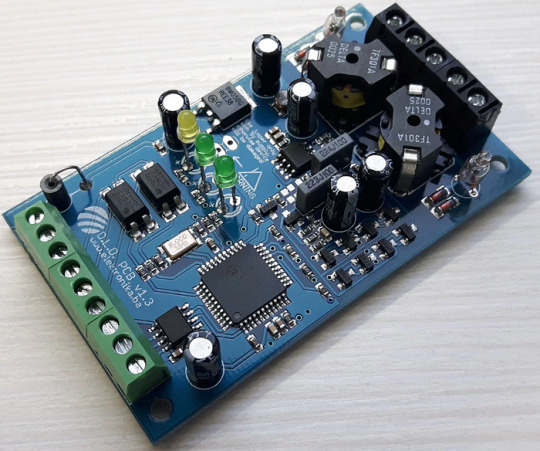
Whether you need to monitor occupancy and count vehicles in parking garages, control vehicle access at door and barrier controls, or facilitate traffic light installations and traffic controllers, the inductive loop detector is the perfect solution. It can even detect the direction and speed of vehicle traffic, making it an invaluable tool for a variety of traffic-related applications. In addition, this device can function as a stand-alone speed trap and can be easily interfaced with Arduino.
We can also provide a pre-programmed PIC chip to meet your project requirements.
Specifications
Number of operating modes: 4
Tuning: Automatic
Detection type: Presence/Pulse
Presence time: Adjustable in 3 steps
Pulse duration: 250 ms / 500 ms
Signal filtering: Adjustable in 2 steps (NORMAL, HIGH)
Loop inductance: 20 uH — 1000 uH
Frequency range: 20 kHz — 145 kHz
Frequency selection: 2 combinations (LOW, HIGH)
Sensitivity: Maximum 0.0025% Δf/f, adjustable in 8 steps
Detection speed: 10 ms by default, adjustable
Start-up time: ~ 1 second per channel (or longer if the frequency is not stable)
Temperature range: -35°C — 120°C
Sensor protection: Galvanic isolation + gas discharge tube for lightning protection
Don’t settle for less — click here to learn more about the Inductive Loop Vehicle Detector and experience the compact, yet cool detector!
Arduino CNC Shield V3.51 by Protoneer
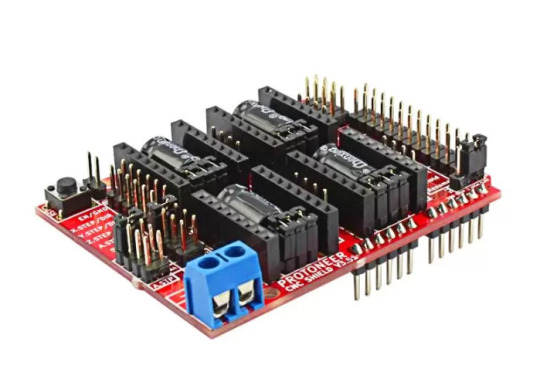
Designed by Protoneer, this kit is packed with features to ensure high precision control of your stepper motors, you can use it to easily build small CNC routers, DIY laser cutters, 3D printers, or any project that requires precise stepper motor control.
Our latest version 3.51 includes several enhancements to make assembly and installation even easier. We’ve added end-stop and probe signal filtering circuitry to eliminate false triggers and allow the use of unshielded cables for end-stops and probes. We’ve also increased the size of the solder pads for easier assembly and updated the probe pin labels to make installation a breeze.
With the Arduino CNC Shield Kit, you’ll have everything you need to build your own CNC router or mill with ease.
Features
Includes Noise Filers on all end stops and the probing pin. (New in V3.51)
GRBL 0.9 compatible. (Open source firmware that runs on an Arduino UNO that turns G-code commands into stepper signals https://github.com/grbl/grbl)
4-Axis support (X, Y, Z, A-Can duplicate X, Y, Z or do a full 4th axis with custom firmware using pins A4 and A3)
2 x End stops for each axis (6 in total)
Coolant enable
Uses removable Pololu A4988 compatible stepper drivers. (A4988, DRV8825 and others)(Not Included)
Jumpers to set the Micro-Stepping for the stepper drivers. (Some drivers like the DRV8825 can do up to 1/32 micro-stepping )
Compact design.
Stepper Motors can be connected with 4-pin molex connectors or soldered in place.
Runs on 12–36V DC. (At the moment only the Pololu DRV8825 drivers can handle up to 36V so please consider the operation voltage when powering the board.)
Don’t wait — click here to see more about the Arduino CNC Shield V3.51 and start your next project today!
Easy Pulse Mikro by Embedded Lab
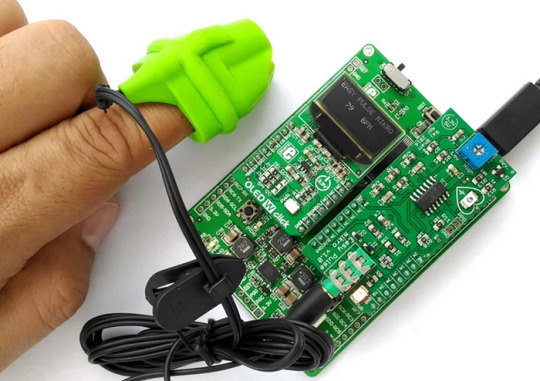
What’s more, the Easy Pulse Mikro is designed in the convenient Mikro bus form factor, making it easy to integrate with a wide range of mikroElektronika’s development boards. With all necessary instrumentation and amplification built right in, this powerful sensor provides a clean and precise analog PPG waveform output that’s routed to the AN pin of the mikroBus connector.
Whether you’re a hobbyist, student, or professional developer, the Easy Pulse mikro is the perfect tool for monitoring heart rate and other vital signs.
Click here to see more about the Easy Pulse mikro.
Features
Compatible with mikroBus socket.
Filtered and amplified analog PPG signal output
On-board potentiometer for adjusting amplifier gain, if needed (rotate clock-wise for increasing gain)
Onboard LED for indicating heartbeat. It flashes synchronously with the heartbeat on detecting the pulse from the fingertip.
2 notes
·
View notes
Text
UNO SPE Shield – Arduino and Microchip pair up
UNO SPE Shield - Arduino and Microchip pair up
0 notes
Text
This 2.4" TFT LCD display module will add up as an awesome display for your Arduino Projects. It can display 240x320 coloured pixels and also has touch screen functionality. The LCD fits directly on top of Arduino UNO as a shield, it is powered by the 3.3V pin on Arduino and communicates through SPI protocol.
3 notes
·
View notes
Text
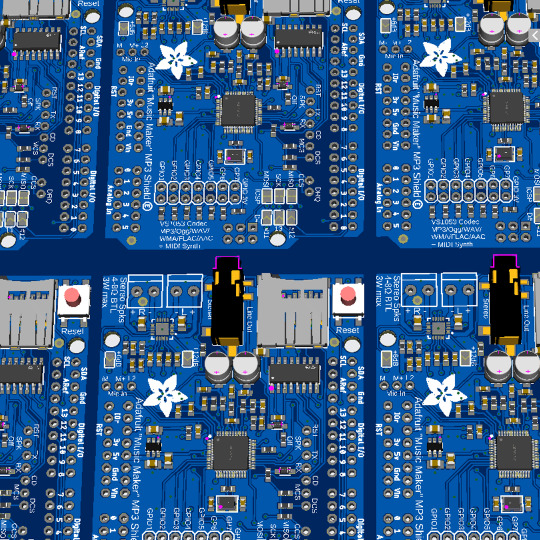
PCB of the day! Adafruit "Music Maker" MP3 Shield for Arduino w/3W Stereo Amp - v1.0 🎵🔧🛠️
23 notes
·
View notes
Text
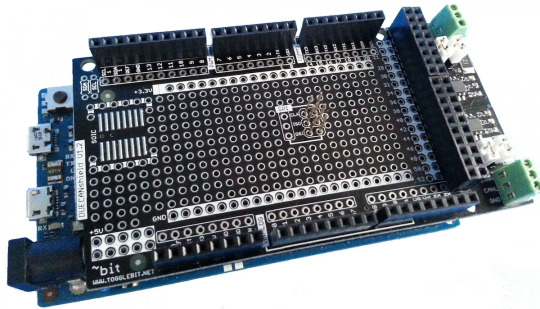
Dual-CAN Shield for Arduino Due
This shield is a prototyping module specifically designed to support the CAN Bus capability on the Arduino DUE. The board includes dual CAN transceivers required by the two integrated CAN ports on the DUE, and also provides a large prototyping area. The shield is pin-for-pin compatible with the Arduino DUE and features a 3.3 VDC bus, 5 VDC bus, SOIC breakout, full digital breakout, CAN termination resistors, and terminal blocks for CAN connections.
1 note
·
View note